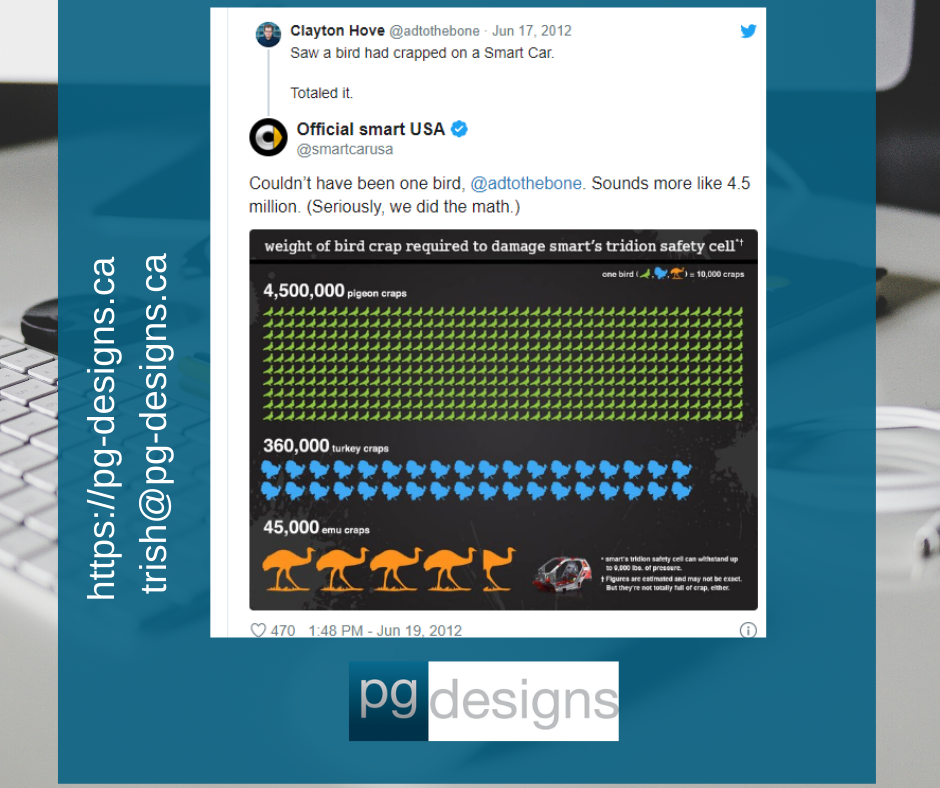
How to create Instagram Story ads
January 29, 2020
Quick ways to update your LinkedIn profile
February 12, 2020Way back in 2012 a user named @adtothebone wrote in a now-deleted Tweet “Saw a bird had crapped on a Smart Car. Totalled it.”
Smart knows people were enjoying the joke. Instead of going quiet it decided to play along. The result was this.Smart’s tweet had 548 Retweets and 470 Likes, which isn’t massive by today’s standards, but does show customers respond to brands that use social media as a two-way communication channel. When you engage with a customer and not just tweet at them it gets noticed!
Smart Car gets attention
The simple interaction between a Smart and its critic became a worldwide phenomenon. When @adtothebone, once a critic of smart’s safety, retweeted the response to his thousands of followers. And followed up with a glowing blog post detailing how smart had earned his respect. His followers immediately began sharing and celebrating it on their own. From there, the content spread organically – without smart having spent a single media dollar – across global news sources, Twitter feeds, and blogs. It hit the #1 spot on Reddit twice in 24 hours, winning the admiration of its notoriously hard-to-impress users. BuzzFeed called it “brilliant.” Forbes applauded the willingness to have some “attitude.” And Mashable said, “This may be the best response from a brand yet.”
Soon enough, Smart Car was making global headlines in newspapers from London, Australia and Ghana. CNN hosts barely able to contain their amusement. Laughing at the brand’s use of “funny yet impeccable math.”. Yet beyond the humour, the Poop Tweet accomplished a major goal for the brand. After years of being a punch line for a perceived lack of safety, as the Daily Mail pointed out, a single tweet helped “millions [become] aware of smart’s tridion safety cell.” In fact, organic searches for “tridion safety” cell spiked 333%. In just three days, the Poop Tweet generated over 22 million impressions. The brand’s Twitter page saw a 1,755% increase in follower growth. The infographic received over 15,400 clicks, which amounted to 82 times the brand’s average Twitter reach. It also helped change online brand sentiment. With smart’s positive sentiment increasing by 27% and its negative sentiment dropping by 13%.

